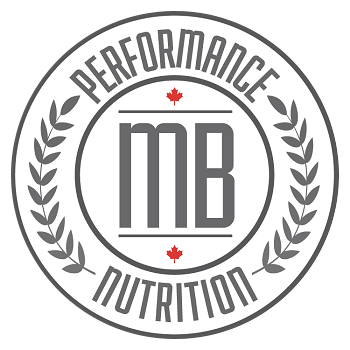Last updated on January 11th, 2024
We’ve been hearing a lot lately about the dangers of low body fat levels for female athletes. Today, I want to focus on the risks for male athletes.
The concept of Relative Energy Deficiency in Sport (RED-S) emerged in 2014. Sports professionals recognized that male athletes with very low body fat levels also suffer from symptoms of the Female Athlete Triad. Those core symptoms are:
- Low Energy Availability (LEA) with or without disordered eating
- Low bone mineral density – athletes are prone to injury and present with stress fractures
- Hormonal imbalances
Who Is at Risk?
Elite and amateur male athletes in disciplines such as combat sports, cycling, distance running and rowing are more susceptible to developing RED-S syndrome. OCR athletes commonly believe that the lower their body fat percentage, the better they’ll perform.
What Causes RED-S?
Disordered eating behaviours are fairly common in competitive male athletes. A desire to excel can lead to self-imposed dietary restrictions which can become compulsive. But disordered eating isn’t the only issue.
If you combine demanding training programs with improper timing of meals or unsound nutrition, it’s easy to see where RED-S can occur unintentionally. In some cases, financial constraints also limit access to adequate nutrition.
Whatever the reasons, RED-S means that the athlete’s energy intake fails to meet the demands of both their physical activity and basic bodily functions. Without sufficient gas in the tank, a vehicle can only go so far. Under-fueling can cause serious setbacks and problems, not just an occasional subpar training session.
The Effects of RED-S
The RED-S model was developed because the consequences of a significant energy deficiency extend way beyond the three symptoms of the Female Athlete Triad mentioned above. RED-S can chip away at everything from your immunity to your mental health and the quality of your sleep. If a young male athlete develops RED-S, it impacts their growth.
Studies on male runners have shown that once body fat levels fall below 5%, they experience a decreased production of testosterone which causes a drastic fall in sperm count, libido and sexual activity.
As an OCR athlete, low body fat levels can compromise your endurance and affect your ability to adapt to training loads.
Thyroid hormone, growth hormone, IGF-1, metabolic rate, and the immune system will all take a hit when body fat levels drop too low.
During periods of intense training, cortisol (stress hormone) levels rise drastically.
What are the Norms for Body Fat Percentage in Men?
We need fat for energy, insulation and to cushion our organs. Adipose tissue is so integral to hormonal function that it’s thought of as an endocrine organ.
The American Council on Exercise lists a body fat percentage between 6% and 13% as the norm for male athletes. These figures go up with age. A fit 20-year old guy can expect to have about 10.5% body fat. At age 60, a fit man can have approximately 19% body fat.
It is commonly suggested that 5% body fat is the minimum required for men to have healthy endocrine and immune function.
Male OCR athletes should avoid dipping below 6% body fat for extended periods of time.
References:
Bean, A. (2017). The complete guide to sports nutrition. London: Bloomsbury.
Body Composition Information and FAQ’s Sheet. (n.d.). Retrieved April 3, 2020, from http://pennshape.upenn.edu/files/pennshape/Body-Composition-Fact-Sheet.pdf
Burke, L. M., Close, G. L., Lundy, B., Mooses, M., Morton, J. P., & Tenforde, A. S. (2018). Relative Energy Deficiency in Sport in Male Athletes: A Commentary on Its Presentation Among Selected Groups of Male Athletes. International Journal of Sport Nutrition and Exercise Metabolism, 28(4), 364–374. doi: 10.1123/ijsnem.2018-0182. Retrieved April 3, 2020, from https://pubmed.ncbi.nlm.nih.gov/30040508/
Clifford, J., & Kozil, A. (2019, March 27). Fat-Soluble Vitamins: A, D, E, and K – 9.315. Retrieved April 3, 2020, from https://extension.colostate.edu/topic-areas/nutrition-food-safety-health/fat-soluble-vitamins-a-d-e-and-k-9-315/
Keay, N. (2017, March 17). Sport Performance and RED-S, insights from recent Annual Sport and Exercise Medicine and Innovations in Sport and Exercise Nutrition Conferences. Retrieved April 3, 2020, from
Mountjoy, M. (2015, October). SPORTS SCIENCE RELATIVE ENERGY DEFICIENCY IN SPORT – Clinical Approach in the Aquatic Disciplines. Retrieved April 3, 2020, from http://www.aspetar.com/journal/upload/PDF/2015111191831.pdf
Mountjoy, M., Sundgot-Borgen, J., Burke, L.M, et al. (2018). International Olympic Committee (IOC) Consensus Statement on Relative Energy Deficiency in Sport (RED-S): 2018 Update. British Journal of Sports Medicine, 52(11), 687–697. doi: 10.1123/ijsnem.2018-0136. Retrieved April 3, 2020, from https://bjsm.bmj.com/content/52/11/687
Reid, H., & Newton, J. (2018, April). Pamidronate disodium treatment for athletes. Retrieved April 3, 2020, from https://www.ouh.nhs.uk/patient-guide/leaflets/files/33841Ppamidronate.pdf
Ryan, M. (2018, January 25). The Dangers of Under Fueling. Retrieved April 3, 2020, from https://www.triathlete.com/nutrition/race-fueling/the-dangers-of-under-fueling/
Scholz, T. (2019, March 10). The Male Athlete Triad. Retrieved April 3, 2020, from https://runningmagazine.ca/trail-running/the-male-athlete-triad/
Scott, J. R. (2020, January 6). Do You Know Your Body Fat Percent? . Retrieved from https://www.verywellfit.com/what-is-body-composition-3495614
Taylor, P. (2019, June 5). Concern over RED-S in male triathletes. Retrieved April 3, 2020, from https://triathlonmagazine.ca/feature/concern-over-red-s-in-male-triathletes/


